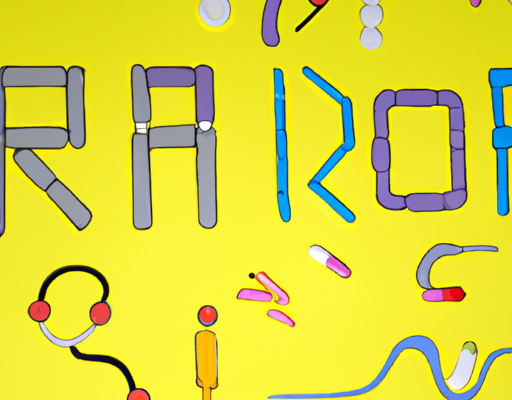What is diabetes?
Diabetes is a complex, chronic health condition that affects how the body processes glucose (sugar). This condition can be managed, but not cured and is one of the leading causes of death worldwide. Managing diabetes is essential for maintaining good health and avoiding complications.
Diabetes is divided into two main types: type 1 diabetes and type 2 diabetes. It is also possible to develop a condition called gestational diabetes during pregnancy. To better understand this condition, let’s take a look at what each type of diabetes entails:
- Type 1 diabetes is an autoimmune disorder in which the body’s immune system mistakenly attacks and destroys insulin-producing cells in the pancreas. This type of diabetes is not preventable and requires lifelong insulin therapy.
- Type 2 diabetes occurs when the body’s cells become resistant to insulin, or when the pancreas doesn’t produce enough insulin. This type of diabetes can be prevented with lifestyle changes and is usually managed with a combination of medications, diet, and exercise.
- Gestational diabetes occurs during pregnancy and is usually temporary. This condition is managed through diet and exercise.
By understanding what diabetes is and how the different types are managed, we can better manage our health and avoid potential complications.
Definition of diabetes
Diabetes is a complex health condition that affects millions of people around the world. It is caused by a lack of insulin in the body, or by the body’s inability to use insulin properly. Diabetes can lead to serious health complications, including heart attack, stroke, and kidney disease.
- Diabetes is marked by a high level of glucose in the blood.
- It is caused by a lack of production or ineffective use of the hormone insulin.
- People with diabetes may experience frequent urination, excessive thirst, and extreme hunger.
- Long-term effects of diabetes can include heart disease, stroke, nerve damage, kidney damage, eye damage, and foot ulcers.
- Treatment for diabetes includes lifestyle changes, such as exercising and eating a balanced diet, and taking medications.
Diabetes can be managed with the help of health care professionals, and with support from family and friends. A healthy lifestyle, including regular physical activity, healthy eating, and maintaining a healthy weight, can help prevent or delay the onset of type 2 diabetes.
Types of diabetes
Diabetes is one of the most common health issues in the world today. It is a chronic metabolic disorder that affects the way a person’s body metabolizes sugar, or glucose. There are two main types of diabetes—type 1 and type 2. Type 1 diabetes is caused when the body does not produce enough insulin, which is necessary for the metabolism of glucose. Type 2 diabetes occurs when the body is unable to effectively use the insulin it produces. This form of diabetes is often related to poor nutrition, lack of exercise, and being overweight. Both type 1 and type 2 diabetes can have serious long-term health implications, such as an increased risk of heart disease, stroke, kidney disease, and vision problems. Treatment for diabetes typically involves lifestyle changes, such as eating a healthy, balanced diet and getting regular exercise, as well as taking certain medications, such as insulin or other diabetes medications. With proper management, it is possible to live a full and healthy life with diabetes.
Diagramming diabetes
Diabetes is a chronic health condition that affects millions of people around the world. It is especially prevalent in low- and middle-income countries. Diabetes is caused by a dysfunction in the body’s ability to process and use the sugar in the bloodstream. The result can be serious and sometimes life-threatening health problems, like heart disease, kidney failure, and stroke. Diagramming diabetes is a powerful tool to help people understand and manage the disease. Through diagrams, doctors and nurses can illustrate how the body works, how diabetes affects it, and what can be done to improve blood sugar levels. They can also explain the signs and symptoms of the disease, as well as the available treatments. Through diagramming, healthcare professionals can help people better understand the impact of diabetes and learn how to better care for themselves.
Reasons why to diagram diabetes
Diagramming diabetes is an important tool to help individuals understand and manage their diabetes. It is a visual representation of the patient’s condition and can be used to keep track of blood sugar levels, blood pressure, and other important health indicators. Diagramming diabetes can help individuals understand the importance of managing their diabetes and provide them with the necessary tools to do so. Here are a few reasons why diagramming diabetes is important for health:
- It helps individuals better understand their condition.
- It can be used to develop strategies to manage diabetes.
- It can be used to track progress and changes in blood sugar levels.
- It can be used to identify potential risks or complications.
- It can help motivate individuals to stay on track with their diabetes management.
Diagramming diabetes can be a powerful tool to help individuals stay healthy and monitor their condition. With the right strategies and habits, individuals can take control of their diabetes and improve their overall health.
Way to diagram diabetes
Living a healthy lifestyle is one of the most effective ways to diagramming diabetes. Eating a variety of nutritious foods and exercising regularly can help people with diabetes (or pre-diabetes) to regulate their blood sugar levels. Making dietary changes, such as reducing caloric intake and lower carbohydrate intake, may also help. It’s also important to make positive lifestyle changes, such as quitting smoking, reducing stress levels, and maintaining an ideal weight. Regular medical check-ups and monitoring of blood sugar levels are also important for diabetics to stay healthy. Taking proactive steps to lead a healthy life is the best way to diagram diabetes.
Conclusion
Diabetes is a chronic condition that requires regular monitoring and proper care to ensure individuals can manage it and live a full and healthy life. It is important to understand the risk factors, diagnosis and treatment of diabetes so that individuals can make well-informed decisions about their health. Making healthier lifestyle choices, such as eating a balanced diet and maintaining regular physical activity can help manage diabetes. While there is no single solution to managing diabetes, being aware of the disease and its potential health risks is the first step to prevent and manage it. As healthcare professionals, it is essential to continue to provide education to individuals, so they can take active control over their health and well-being.
References
Diabetes is a major health concern that affects millions of people around the world. Understanding how to manage it can make a huge difference in managing your health. Diagramming diabetes can help you identify potential risks and understand how to take control of your diabetes. Here are some helpful resources to help you learn more about diabetes:
- American Diabetes Association: Provides a comprehensive overview of diabetes and its management.
- Centers for Disease Control and Prevention: Offers up-to-date information on diabetes prevention and treatment.
- National Institute of Diabetes and Digestive and Kidney Diseases: Provides research-based information about diabetes.
- Diabetes UK: Aims to improve the lives of people living with diabetes through education and support.
- Canadian Diabetes Association: Offers resources and support for those living with diabetes.
These resources are an excellent starting point to understand diabetes and take control of your health. With the right information and resources, you can make positive changes to improve your diabetes management.





No Comments